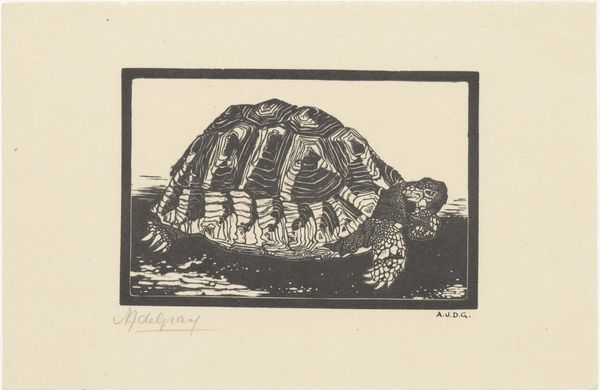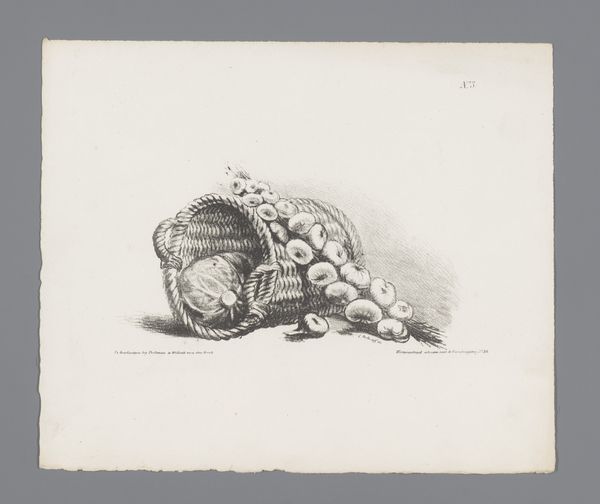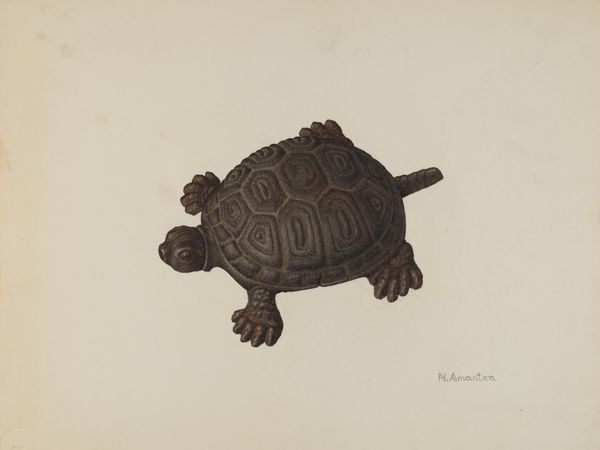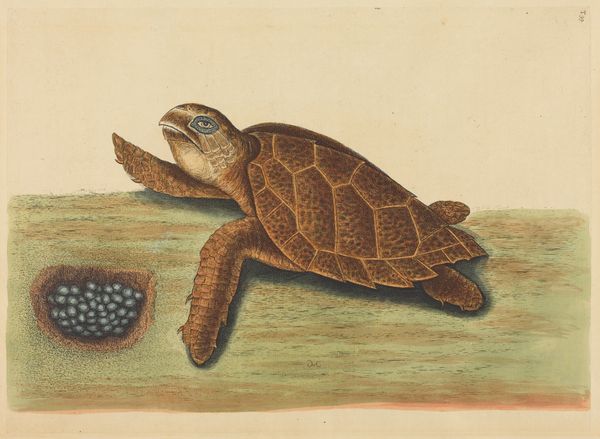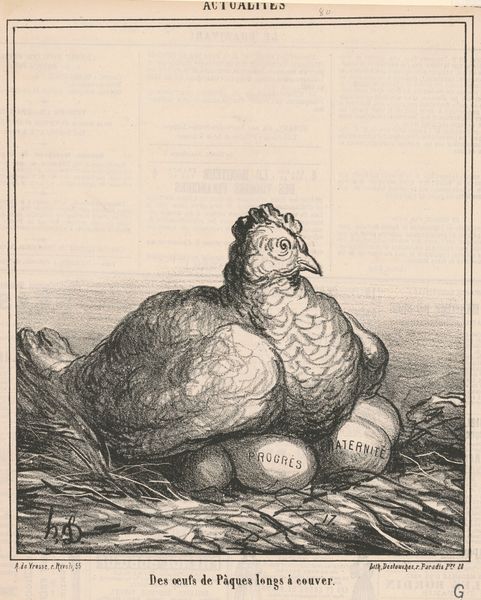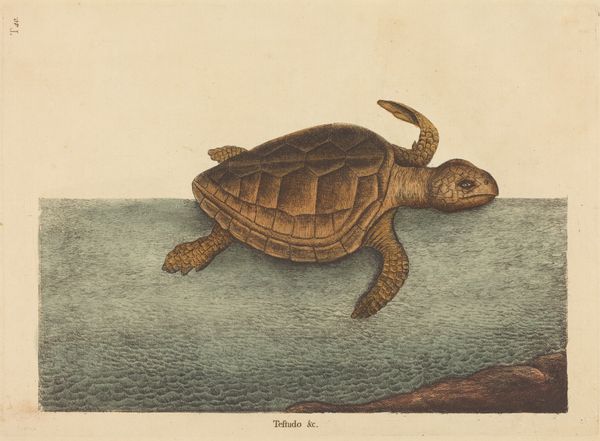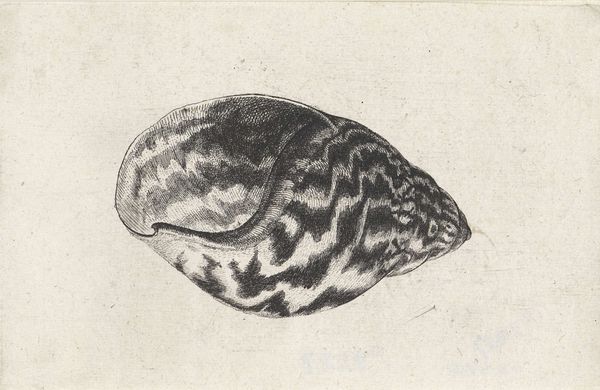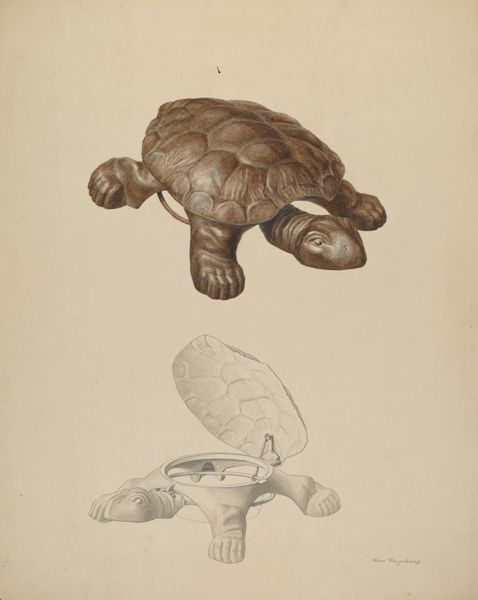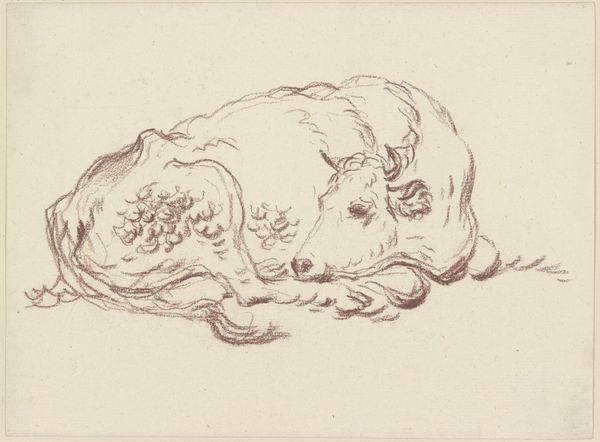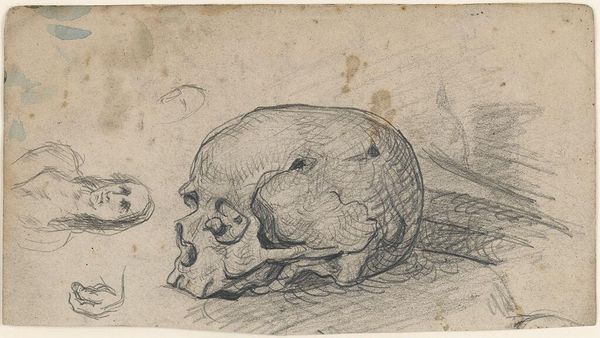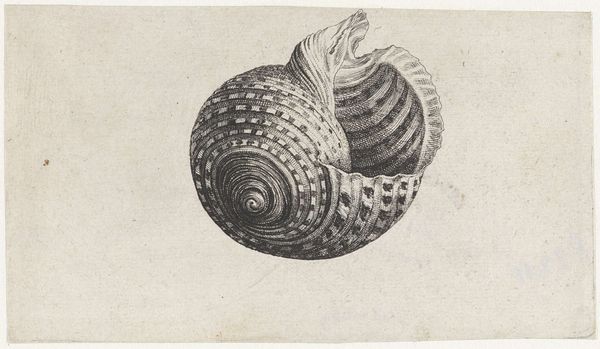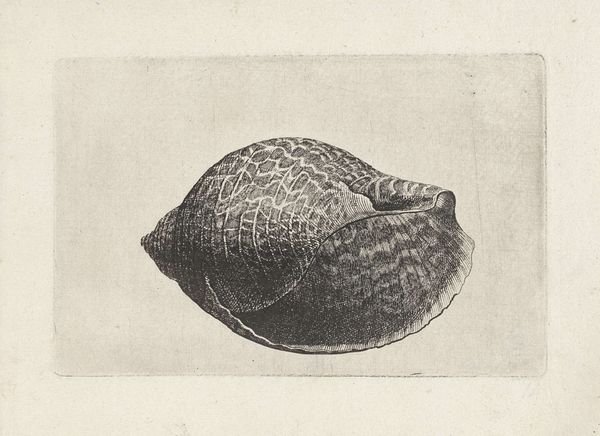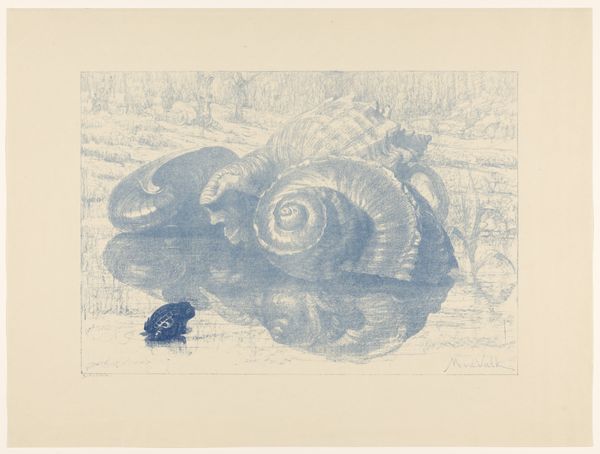
drawing, ink
#
drawing
#
animal
#
figuration
#
ink
#
realism
Copyright: Public Domain
Curator: The piece before us, "Drawing for the Primer_Tortoise," was rendered around 1905 by Hans Thoma. Executed in ink, the drawing is currently held in the collection of the Städel Museum. Editor: It's incredibly charming! The use of ink creates this dense, almost comforting image of the tortoise, all sturdy shell and patient stillness. I can already appreciate the symbolism one could project onto the animal as a motif. Curator: Precisely. Thoma often embedded profound themes within deceptively simple figurations. Tortoises in art frequently represent patience, wisdom, and longevity, sometimes challenging the very idea of progress and efficiency—qualities prized within rapidly industrializing societies of that era. Consider how its slow, steady journey can symbolize resistance to imposed structures. Editor: Looking closer, the shell pattern is so intricate. But there's also this tension because it’s flat. It does make me think about how the drawing, destined perhaps for educational use, flattens a complex creature to didactic simplicity. Curator: Interesting. This "flattening" could speak volumes about institutional approaches to knowledge dissemination. By stripping away nuances and presenting simplified, digestible information, institutions may subtly enforce a specific viewpoint, dictating how we perceive both the natural world and, more broadly, social constructs. Editor: Absolutely. The choice of the tortoise—a creature carrying its home on its back—further highlights this point. It hints at broader discussions around themes of displacement, home, and perhaps, the burden of inherited knowledge. And let’s remember the time this work was created: What about a potential link with then burgeoning discourse surrounding concepts such as eco-criticism? Curator: It’s certainly plausible. The context, then, reveals multiple layers of meaning – social commentary, reflections on our relationship with nature, and subtle critiques of institutional power. Editor: This thoughtful examination reveals the significance in Thoma's illustration. It is an exercise in seeing, a gentle but pertinent reflection on nature, culture, and knowledge. Curator: Indeed, inviting the viewers to find greater purpose within simple and understated aesthetics.
Comments
No comments
Be the first to comment and join the conversation on the ultimate creative platform.
